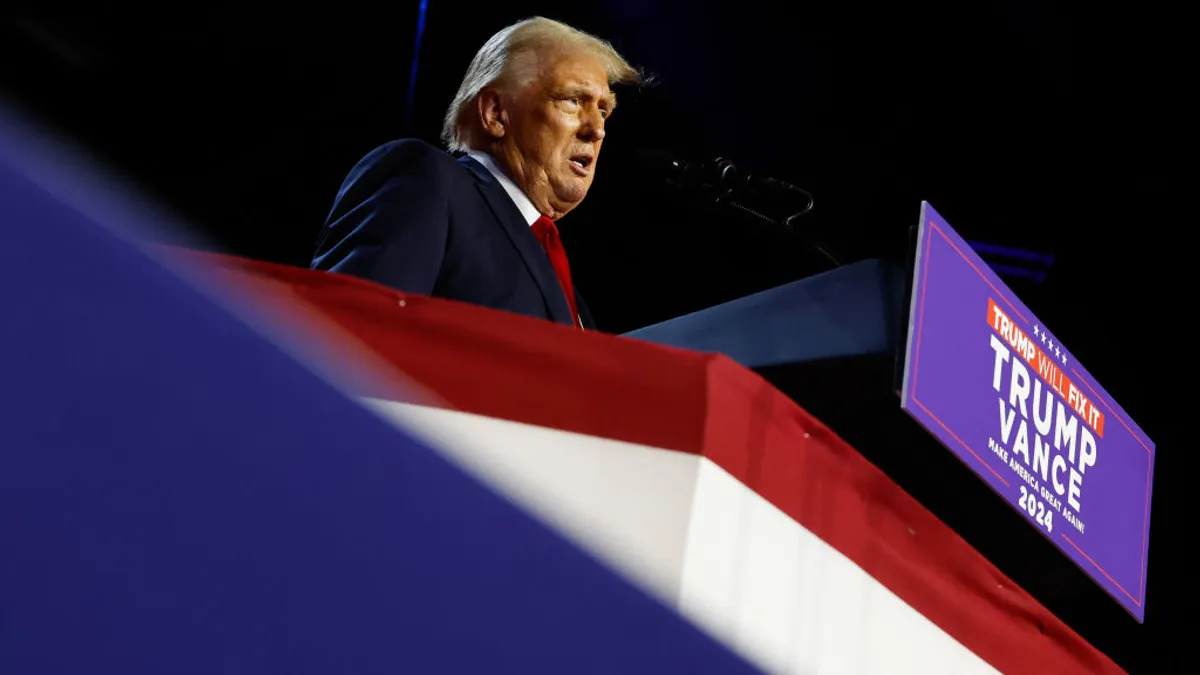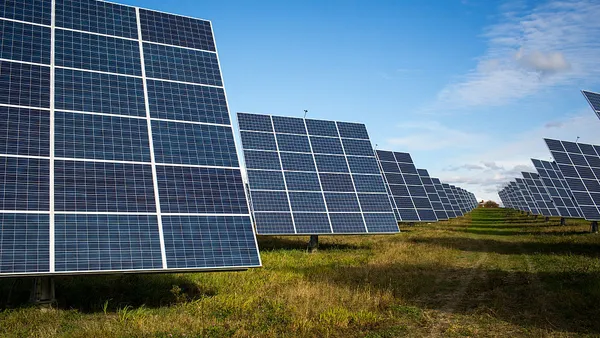Dive Brief:
- As industry advocates seek to keep the solar-boosting elements of the Inflation Reduction Act intact, they’re making the case to lawmakers that solar energy is boosting American manufacturing while helping meet spiking electricity demand.
- “One of the things that's resonating with lawmakers now is that you don't want to strand investments that have been made by American businesses in local economies,” said Sean Gallagher, senior vice president of policy at the Solar Energy Industries Association. “You don't want these factories that have opened up in the last couple years to go dark.”
- At the same time, the Trump administration’s trade policies are putting pressure on the entire clean energy industry along with its investors, said Paul DeCotis, a senior partner and head of East Coast energy and utilities at West Monroe.
Dive Insight:
“As we start this policy of isolationism internationally, we're going to lose access to the very same minerals, rare earths and materials we need to bolster the clean energy industry,” DeCotis said. “We can manufacture solar panels in the U.S.,” he added — or offshore wind turbines, or batteries. “But our supply chain comes from international partners, so unless we start building our own supply chain of rare earths and minerals and upstream materials needed for the clean energy industry … we don't have the inputs necessary to support the manufacturing of those technologies.”
The buildout of the clean energy economy that was envisioned by the Biden administration, with IRA and Infrastructure Investment and Jobs Act funding, offered a “glide path” for investors to predict their trajectory, DeCotis said — but the macroeconomic impacts of President Trump’s tariffs and other policy initiatives are disrupting that.
“We’re beginning to see some supply chain concerns over availability of equipment for these large infrastructure projects, and for some of the clients we're talking to, there's a reluctance to finalize a decision on the capital expenditure,” he said. “So just the uncertainty in its own right is wreaking a degree of havoc in the financial markets.”
The U.S. Energy Information Administration said in a short-term energy outlook that it expects solar generation to increase by 35% this year and by 18% in 2026. According to the U.S. Solar Market Insight 2024 Year in Review report released in March by SEIA and Wood Mackenzie, solar and storage accounted for 84% of all new electric generating capacity added to the grid last year, while domestic solar module production tripled.
“Around 80% of the projects that are most advanced in interconnection queues across the country are solar and storage,” Gallagher said. He pointed to recent comments from NextEra Energy president and CEO John Ketchum, who said at CERAWeek in March that “renewables are ready to go right now” while gas generation is facing deployment delays due to factors like high demand and labor shortages.
“As [electricity] demand increases rapidly, solar and storage are ready,” Gallagher said. “So we're making the case to the folks in Congress that you don't want to do anything that would damage or limit the ability of solar and storage to be deployed to meet that growing demand.”
SEIA’s priorities include preserving the 45X manufacturing tax credit to increase solar manufacturing capacity in the U.S., he said, and preserving the 48E investment tax credit and the 25D rooftop solar tax credit to “provide the market that enable the factories to have customers.”
Glen Brand, vice president of policy and advocacy at Solar United Neighbors, said he believes there is bipartisan support in Congress to preserve the IRA’s tax credits, citing the 21 Republican representatives who signed a letter opposing their wholesale repeal, and a similar letter sent by four Republican senators on April 10.
“We were surprised to see [Sen. Jerry Moran’s] name on that list — very, very encouraging,” Brand said. “And I think there's going to be, in the subsequent weeks, more support from senators for the kind of approach outlined in that letter.”
Brand said that Solar United Neighbors is focusing its lobbying efforts on convincing lawmakers that the economics of solar are sound on a consumer basis, and that the technology is saving their constituents money.
“We brought a constituent of Rep. Mariannette Miller-Meeks to D.C. to meet with her,” he said. “And not only was he a solar homeowner, but he was also a leader in his local church, which went solar through the direct pay part of the ITC. And he was able to explain that it wasn't about climate change, it was about all-of-the-above strategies – it was really about how the church is saving over $300 per month on electricity bills, and that they're using that money to reinvest in their charitable work.”













